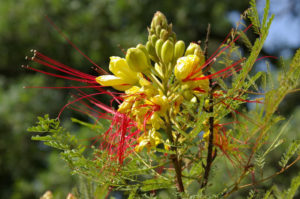If you have a large calamus growing in your pond, it’s time to collect its medicinal roots. But all in order.
Calamus vulgaris is a perennial herbaceous fragrant plant with a thick, long, creeping, yellow-green rhizome up to 3 m (3.3 yard) long, covered with spirally arranged leaf scars. The stem is erect, unbranched, 80-125 cm high (2.6-4.1 feet). The leaves are narrowly linear, ensiform, 60-120 cm long (2-3. 9 feet), two-row, bright green with a spicy aroma. The flowers are small, greenish-yellow, collected in a fleshy, protruding cob; they bloom in May-July. Fruits-multi-seeded red berries are rarely formed.
Calamus forms spectacular groups of stems and leaves that rise high above the water, the strict linearity of which will harmoniously fit into the style of a summer house . Supports and creates a green or greenish-white scale. Decorative throughout the growing season.
It is recommended for registration of various reservoirs (with immersion in water to a depth of 0.3-0.5 m/1-1. 6 feet) or for planting in a swampy area of the site, preferably on clay, but it is also possible on sandy loam soil, it is permissible – in containers. With intensive growth, it can displace other plant species, so it needs to be controlled. Distance between plants when planting: 50-70 cm (1.6-2.3 feet). By planting calamus, you can provide your family with valuable food and medicinal raw materials and keep the water in the reservoir clean.
Common calamus is used as an ornamental, food, spicy, medicinal plant. In food, use 2-3-year-old rhizomes with bitterness (in dry form as a spice instead of bay leaf, ginger, cinnamon; fresh rhizomes in small doses are used to prepare jams, candied fruits, sweets), juicy, soft parts of the plant (in salads, as a spice for fish, for flavoring strong, sweet drinks, beer, confectionery).
For medicinal purposes, rhizomes are used that have a tonic, anti-inflammatory, analgesic, choleretic, secretolytic, antibacterial, disinfectant, anthelmintic effect, strengthening the gums and teeth.
Here are some usage recipes:
Acorus heartburn: it is enough to take the ground powder of the rhizome with the tip of a knife and drink it with water. Heartburn goes away in a few minutes. When the acidity decreases, calamus is taken before meals. When the acidity increases after eating.
Choleretic drops from acorus: to do this, you need to dilute 1 teaspoon of rhizome powder with 1.5 tablespoons of vodka, then insist 10-12 days in a warm, dark place, shaking daily. Take after meals, with a small amount of water, 25-30 drops (for an adult).
Antiallergic bath of acorus for children: 1 tablespoon of crushed calamus rhizome pour 1 liter of warm water in an enameled bowl, bring to a boil over low heat and boil for 2-3 minutes. Cool, strain and add to the bath.
Acorn roots are harvested in late summer or autumn, washed, peeled (like potatoes), cut into 4 pieces lengthwise and then crosswise into pieces 3-4 cm long (1.2-1.6 inches). Dry at a temperature not exceeding 35°C (95°F).






